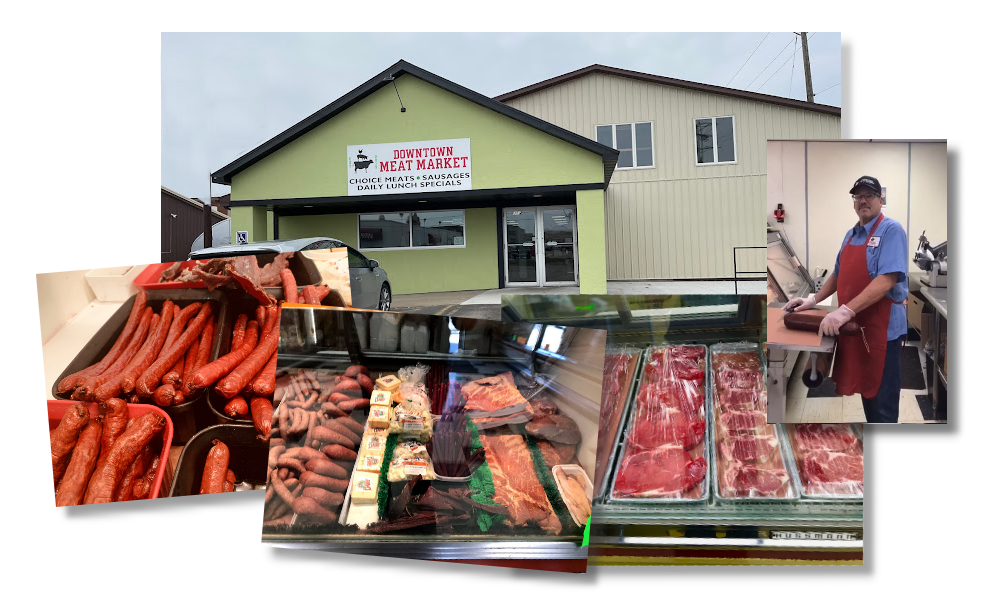Top Reasons to Shop at Bagley Farms Meat Market Edwardsville IL for Premium Meats
Top Reasons to Shop at Bagley Farms Meat Market Edwardsville IL for Premium Meats
Blog Article
Reveal the Art of the Butcher's Cut in a Modern Meat Market
In the ever-evolving landscape of modern meat markets, the butcher's cut has actually transcended its typical origins, merging old-time workmanship with modern methods. What really sets the modern-day butcher apart is their capacity to create a deeper link between consumers and the beginnings of their meat.
Development of Butchery Methods
The evolution of butchery techniques reflects an abundant tapestry of technology and adjustment driven by advancements in modern technology, modifications in consumer demand, and a much deeper understanding of meat science. Historically, butchery was a craft passed down through generations, with approaches refined over centuries to make the most of yield and taste. However, the commercial transformation introduced mechanization, changing standard practices and enabling massive processing.
The mid-20th century saw butchery techniques further refined by scientific understandings into muscle mass biology and meat aging, enhancing both tenderness and taste. Developments like vacuum packaging and refrigeration prolonged item shelf-life, permitting butchers to diversify offerings and improve quality assurance. This duration additionally noted the rise of specialized equipment, such as band saws and meat slicers, which enhanced precision and effectiveness in meat handling.

The 21st century has actually presented digital innovation into the butchery realm. Digital systems now aid in monitoring animal provenance and enhancing cuts to satisfy certain client preferences. Furthermore, a resurgence in artisanal butchery has emerged, mixing typical abilities with contemporary understanding to cater to consumers seeking ethical and lasting meat choices. This development highlights a dynamic interaction in between custom and development, meeting modern needs while preserving the craft's heritage.
Recognizing Meat Cuts
Understanding the details of meat cuts is necessary for both butchers and consumers looking for quality and worth. For butchers, precise cuts show ability and regard for the craft, guaranteeing marginal waste and optimal yield.

Comprehending muscle composition is essential; muscle mass utilized much more frequently by the pet have a tendency to be tougher and are best matched for sluggish cooking approaches, while less-used muscle mass, like those found in the loin, are extra tender and suitable for grilling or roasting. Knowledge with these distinctions empowers customers to make informed selections, improving their cooking ventures.
Selecting Top Quality Meat
Selecting the right meat includes greater than simply picking an aesthetically appealing item from the display. bagley farms meat market edwardsville il. The art of choosing quality meat needs a discerning eye and understanding of specific qualities that signify quality and excellence. First of continue reading this all, pay attention to the color; beef needs to have a brilliant, cherry-red tone, while lamb ought to show a soft pink tone, and pork a pale pink. This suggests the meat is fresh and hasn't been revealed to oxygen for too long.
Secondly, consider the marbling, which describes the white flecks of fat within the muscle. Appropriate marbling is a key indication of tenderness and taste, as it thaws during cooking, improving the meat's juiciness. Keep in mind, greater marbling often correlates with premium quality cuts, such as USDA Prime.
Structure is one more essential factor; meat should feel firm to the touch, not slimy or overly soft. Additionally, be mindful of the fragrance. Fresh meat ought to have a clean, neutral smell, totally free from any sour or off-putting odors.
Pairing Cuts With Food Preparation Approaches

On the other hand, harder cuts like brisket and chuck roast are abundant in collagen, which damages down into gelatin when cooked gradually. These cuts are ideal for braising or slow roasting, enabling the meat to soften with time and develop deep, complicated flavors. Cuts such as short ribs and pork shoulder fare well with slow-cooking methods, where prolonged cooking visit our website times transform their robust structures right into delicious recipes.
Lamb shanks and oxtail, which call for long term cooking to tenderize, are perfect candidates for stewing or sluggish simmering. These techniques coax out rich, hearty flavors while preserving wetness. By comprehending the special characteristics of each cut, cooks and home chefs alike can boost their cooking productions, ensuring each recipe is both pleasing and remarkable.
The Butcher's Role Today
Browsing the developing landscape of the modern-day meat market, the butcher's function today expands beyond plain preparation of cuts. Contemporary butchers are cooking artisans, teachers, and advocates for sustainable techniques.
Along with crafting precise cuts, butchers currently involve directly with consumers, providing cooking suggestions and tailoring options to suit private demands and preferences. Their expertise in meat aging, marbling, and flavor accounts equips customers to make informed choices, enhancing their culinary experiences. This personalized service exhibits the butcher's evolving function as a relied on advisor in the kitchen area.
Moreover, butchers are critical in lessening waste, utilizing whole animals to develop varied products such as sausages and stocks. This detailed strategy not only appreciates the pet but also lines up with modern sustainability objectives. By doing this, the modern-day butcher embodies read this article both custom and advancement, adapting to an ever-changing market while preserving the creativity and stability of their craft.
Final Thought
Proficiency in recognizing diverse meat cuts and quality indicators encourages butchers to supply educated recommendations, aligning details cuts with ideal cooking approaches. By recognizing historical techniques while accepting contemporary needs, the butcher's function remains vital in today's innovative meat market.
Report this page